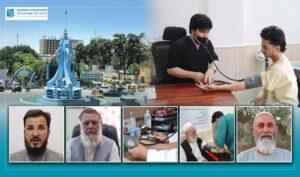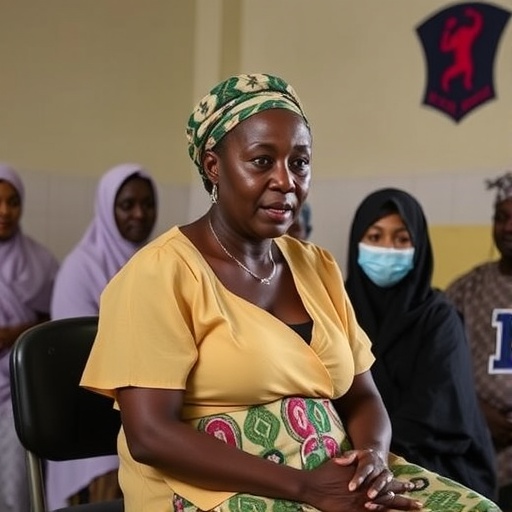11-year-old girl’s forced marriage prevented in Herat – Pajhwok Afghan News

Report on Human Rights Interventions in Herat Province and Alignment with Sustainable Development Goals
Incident 1: Prevention of Child and Forced Marriage
- Event: The forced marriage of an 11-year-old girl to a 65-year-old man was prevented by authorities.
- Location: Adrskan district, Herat province.
- Action Taken: Departmental inspectors (Muhtasebeen) intervened based on received information.
- Outcome: The marriage was stopped, and suspects involved in arranging the union were arrested.
SDG Implications: Child and Forced Marriage
- SDG 5 – Gender Equality: The intervention directly supports Target 5.3, which calls for the elimination of all harmful practices, such as child, early, and forced marriage. This action protects a girl from a severe form of gender-based violence and upholds her rights.
- SDG 16 – Peace, Justice and Strong Institutions: This action aligns with Target 16.2, which aims to end abuse, exploitation, and all forms of violence against children. The arrest of suspects demonstrates institutional commitment to justice and the rule of law.
- SDG 3 – Good Health and Well-being: By preventing the child marriage, authorities protected the girl from the significant physical and mental health risks associated with early pregnancy and childbirth, which are common consequences of such unions.
- SDG 4 – Quality Education: The intervention safeguards the girl’s opportunity to continue her education, a fundamental right often denied to child brides.
Incident 2: Rescue from Unlawful Confinement
- Event: A woman was rescued from illegal imprisonment (“house arrest”) by her relatives.
- Location: Poshtkuh district, Herat province.
- Action Taken: Inspectors secured the woman’s release following the receipt of accurate information.
- Outcome: The case was formally referred to legal authorities for due process.
SDG Implications: Unlawful Confinement
- SDG 5 – Gender Equality: The rescue operation upholds Target 5.2 (eliminating all forms of violence against women) and Target 5.1 (ending discrimination). Unlawful confinement represents a grave violation of a woman’s liberty and a form of gender-based violence.
- SDG 16 – Peace, Justice and Strong Institutions: This intervention supports Target 16.3 by promoting the rule of law and ensuring the victim has access to justice. It demonstrates the capacity of institutions to protect citizens from violence and uphold personal liberty.
Official Response and Institutional Commitment to SDGs
- Shaikh Aziz Ul-Rahman Al-Mahajir, Director of the Propagation of Virtue, Prevention of Vice and Hearing Complaints department, emphasized a commitment to protecting the legitimate rights of women.
- He declared that forced marriage and the illegal imprisonment of women are unacceptable practices.
- The department actively encourages residents to report such violations, fostering community participation in upholding justice.
- The directorate assured that all complaints would be addressed immediately, reinforcing its role as a key institution for justice and citizen protection, in alignment with SDG 16.
- The department’s stated mission to combat undesirable customs contrary to Islamic values, particularly those harming women, directly contributes to the overarching goals of SDG 5.
1. Which SDGs are addressed or connected to the issues highlighted in the article?
The article highlights issues that are directly connected to two primary Sustainable Development Goals (SDGs):
- SDG 5: Gender Equality – This goal is central to the article, which focuses on protecting women’s rights by preventing the forced marriage of a young girl and rescuing a woman from illegal imprisonment. These actions aim to end discrimination and violence against women and girls.
- SDG 16: Peace, Justice and Strong Institutions – This goal is addressed through the actions of the “Propagation of Virtue, Prevention of Vice and Hearing Complaints department.” The department’s role in enforcing laws, preventing violence, arresting suspects, and providing a channel for citizens to report crimes and seek justice (“introduced the case to legal authorities”) demonstrates the function of an institution working to uphold the rule of law and protect vulnerable individuals.
2. What specific targets under those SDGs can be identified based on the article’s content?
Based on the events described, several specific targets under SDG 5 and SDG 16 are relevant:
SDG 5: Gender Equality
- Target 5.2: Eliminate all forms of violence against all women and girls in the public and private spheres.
- Explanation: The rescue of a woman from “house arrest” by her relatives is a direct intervention against violence (illegal imprisonment) occurring in the private sphere. The official’s statement that “illegal imprisonment of women was unacceptable in any way” reinforces the commitment to this target.
- Target 5.3: Eliminate all harmful practices, such as child, early and forced marriage.
- Explanation: The article’s main event, the prevention of the “forced marriage of an 11-year-old girl to a 65-year-old man,” is a clear and direct action toward achieving this target. The official’s condemnation of “forced marriage” as an “undesirable custom” further supports this connection.
SDG 16: Peace, Justice and Strong Institutions
- Target 16.1: Significantly reduce all forms of violence and related death rates everywhere.
- Explanation: The actions of the provincial department to prevent a forced child marriage and free an imprisoned woman are direct efforts to reduce violence against vulnerable members of society.
- Target 16.2: End abuse, exploitation, trafficking and all forms of violence against and torture of children.
- Explanation: Preventing the marriage of an 11-year-old girl is a specific action to end the abuse and exploitation of a child, which directly aligns with this target.
- Target 16.3: Promote the rule of law at the national and international levels and ensure equal access to justice for all.
- Explanation: The article states that suspects were arrested and the case of the imprisoned woman was “introduced to legal authorities.” Furthermore, the department director “called on residents to report such cases,” positioning the department as a mechanism for accessing justice and upholding the law.
3. Are there any indicators mentioned or implied in the article that can be used to measure progress towards the identified targets?
While the article does not provide quantitative data, it implies several qualitative and quantitative indicators that could be used to measure progress:
Indicators for SDG 5 Targets
- For Target 5.3: The primary implied indicator is the number of cases of child, early, and forced marriage prevented or prosecuted. The article provides a specific instance of one such prevention. This aligns with the official indicator 5.3.1 (Proportion of women aged 20-24 years who were married or in a union before age 18), as each prevented case contributes to lowering this proportion.
- For Target 5.2: An implied indicator is the number of reported and addressed cases of violence against women, including illegal imprisonment. The rescue of the woman from “house arrest” is one such case. The director’s call for residents to “report such cases” suggests a system for tracking these incidents, which relates to indicator 5.2.1 (Proportion of ever-partnered women and girls subjected to violence).
Indicators for SDG 16 Targets
- For Target 16.2: The number of children protected from abuse or exploitation is an implied indicator. The prevention of the 11-year-old girl’s marriage is a direct measure of this. This relates to indicator 16.2.1 (Proportion of children aged 1-17 years who experienced any physical punishment and/or psychological aggression by caregivers).
- For Target 16.3: The number of cases of violence against women and children “introduced to legal authorities” and the number of suspects arrested are implied indicators of access to justice and the functioning of the rule of law. The article mentions both of these actions, pointing towards progress on indicator 16.3.1 (Proportion of the population who have experienced a dispute and who accessed a formal or informal dispute resolution mechanism).
4. Create a table with three columns titled ‘SDGs, Targets and Indicators” to present the findings from analyzing the article.
| SDGs | Targets | Indicators (Implied from the article) |
|---|---|---|
| SDG 5: Gender Equality | 5.3: Eliminate all harmful practices, such as child, early and forced marriage. | Number of prevented cases of child and forced marriage (e.g., the prevented marriage of the 11-year-old girl). |
| 5.2: Eliminate all forms of violence against all women and girls. | Number of women rescued from illegal imprisonment or other forms of violence (e.g., the woman rescued from ‘house arrest’). | |
| SDG 16: Peace, Justice and Strong Institutions | 16.2: End abuse, exploitation… and all forms of violence against… children. | Number of children protected from abuse and exploitation through official intervention. |
| 16.3: Promote the rule of law… and ensure equal access to justice for all. | Number of cases referred to legal authorities and number of suspects arrested in relation to violence against women and children. | |
| 16.1: Significantly reduce all forms of violence. | Number of reported incidents of violence that are successfully prevented or stopped by authorities. |
Source: pajhwok.com

What is Your Reaction?
 Like
0
Like
0
 Dislike
0
Dislike
0
 Love
0
Love
0
 Funny
0
Funny
0
 Angry
0
Angry
0
 Sad
0
Sad
0
 Wow
0
Wow
0















































































